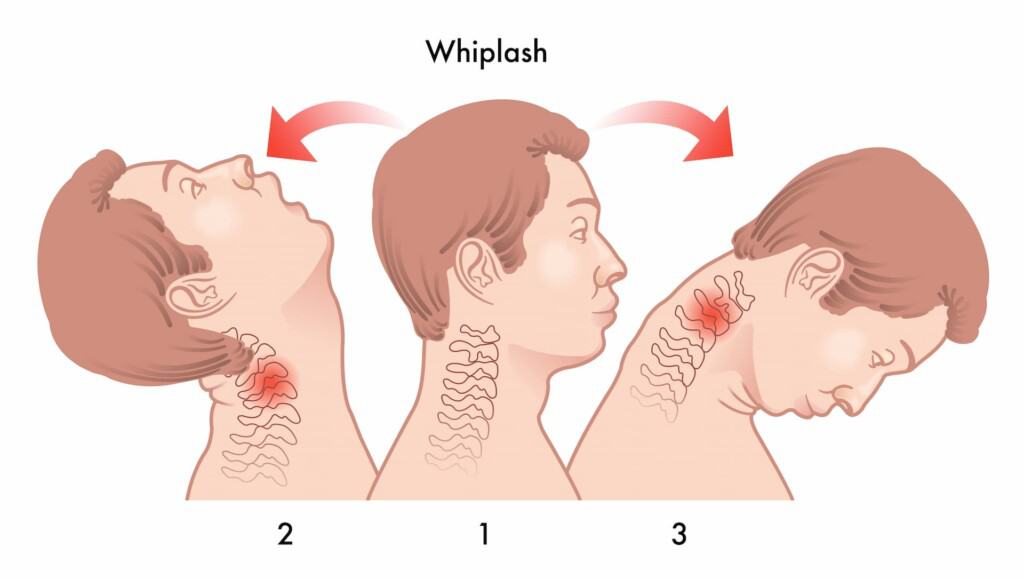As a bodyworker, I’ve seen how a simple fender bender or fall can lead to persistent neck pain that just won’t quit. That nagging stiffness, those frustrating headaches – they can show up days or even weeks after an incident, turning what seemed like a minor bump into a daily challenge. Luckily, bodywork therapy can offer relief that goes beyond typical painkillers or just “waiting it out.”
What many people don’t realize is that whiplash symptoms can be sneaky – you might walk away from an accident feeling fine, only to wake up days later wondering why your neck feels like it’s made of cement. That’s actually quite normal, and it’s one reason why getting assessed early can make such a difference in your recovery.
Whiplash occurs when a sudden force jerks your head rapidly forward and back (or side-to-side). This jarring movement, common in car accidents, sports injuries, or falls, can strain neck muscles, ligaments, and affect spinal alignment. Think of it like a whip cracking – your neck goes through a similar motion, but unlike a whip, our necks aren’t designed for that kind of rapid movement.

The resulting symptoms often include:
You might also experience less common symptoms like ringing in the ears, difficulty concentrating, or even blurred vision. If you notice any of these additional symptoms, it’s important to mention them during your assessment.
These symptoms can significantly impact daily activities, from checking blind spots while driving to getting a good night’s sleep. Even simple things like reading a book or cooking dinner can become challenging when your neck isn’t cooperating. While conventional treatments like pain medication have their place, bodywork therapy offers a more comprehensive approach to recovery.
Every whiplash case is unique. During your first session, we’ll discuss your symptoms, their onset, and what activities affect them.
I always ask about your daily routine too – sometimes it’s the little things, like how you sleep or work at your computer, that can make a big difference in your recovery.
This helps create a targeted treatment plan using a combination of specialized techniques:

Unlike medication, which mainly masks pain, bodywork addresses the root causes of your discomfort. It’s like the difference between putting a bandaid on a blister versus removing the shoe that’s causing it. We’re not just trying to make you feel better temporarily – we’re working to restore proper function and prevent long-term problems.

Recovery doesn’t stop when you leave the treatment room. In fact, what you do between sessions can be just as important as the treatment itself. To get the most from bodywork therapy, I recommend these easy but effective self-care practices to try at home:
“How long until I feel better?” This is probably the question I hear most often, and for good reason. While everyone’s timeline is different, most people start noticing improvement after their first session. Some clients experience significant relief right away, particularly if they sought help early. With consistent bodywork, many clients achieve full recovery within 2-3 sessions, compared to several weeks or months without treatment.
Remember, the benefits of bodywork aren’t always felt immediately after a session. You’ll typically start feeling the full effects about 48 hours after your session. This delay is normal. It happens because bodywork triggers your body’s natural healing response, which can include temporary mild inflammation.
While bodywork is incredibly effective, sometimes a team approach yields the best results. If you’re also working with other healthcare providers like a physical therapist or chiropractor, let me know. We can coordinate our approaches to support your recovery more effectively.

If you’re tired of “waiting it out” or relying solely on pain medication, bodywork therapy offers a gentle yet effective path to recovery. Each session builds on the previous one, helping you regain comfort and mobility. Ready to start your recovery journey? Book your session today. Together, we’ll develop a treatment plan tailored to get you back to feeling your best.